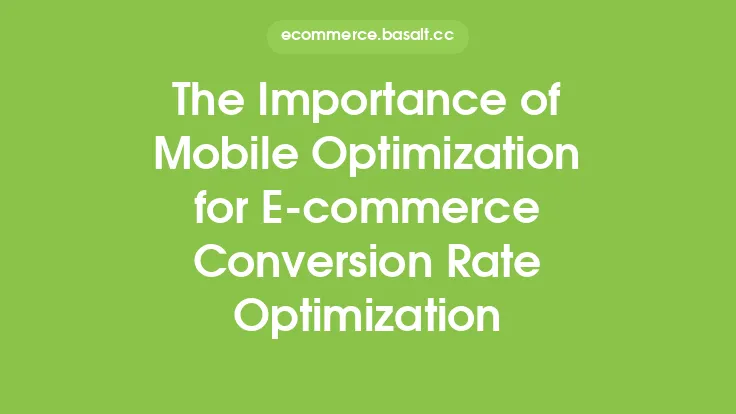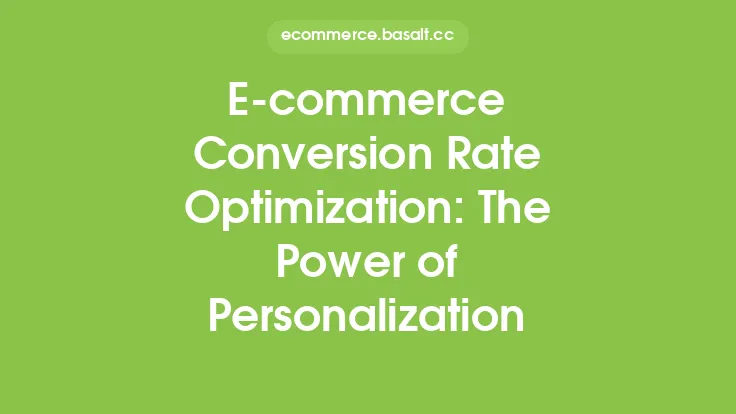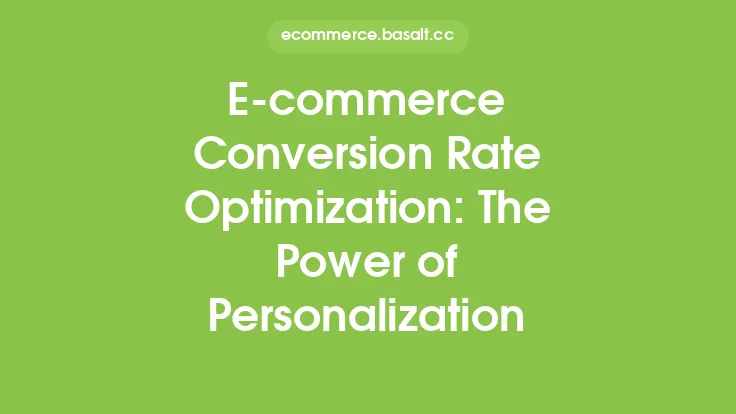As the world becomes increasingly mobile, it's no surprise that mobile e-commerce has become a crucial aspect of any online business. With more and more consumers turning to their smartphones to make purchases, it's essential to ensure that your mobile e-commerce site is optimized for conversions. Conversion Rate Optimization (CRO) is the process of increasing the percentage of website visitors who complete a desired action, such as making a purchase or filling out a form. In this article, we'll explore the best practices for CRO in mobile e-commerce, providing you with the knowledge and tools you need to boost your mobile conversions.
Understanding Mobile E-commerce Conversion Rate Optimization
Mobile e-commerce CRO involves understanding how users interact with your site on their mobile devices and making data-driven decisions to improve their experience. This includes analyzing user behavior, identifying pain points, and testing different elements of your site to determine what works best. Mobile e-commerce CRO is unique in that it requires consideration of the smaller screen size, touch-based interface, and often slower loading speeds of mobile devices. By understanding these factors, you can create a mobile e-commerce site that is tailored to the needs of your users, increasing the likelihood of conversions.
Mobile-Friendly Design
A mobile-friendly design is essential for mobile e-commerce CRO. This means that your site should be responsive, meaning it adapts to the screen size and device of the user. A responsive design ensures that your site looks and functions well on all devices, from smartphones to tablets to desktop computers. Additionally, your site should be easy to navigate, with clear and concise menus and minimal clutter. A well-designed mobile site will help to reduce bounce rates, increase engagement, and ultimately drive more conversions.
Streamlining the Mobile Shopping Experience
Streamlining the mobile shopping experience is critical for CRO. This involves making it easy for users to find what they're looking for, complete their purchase, and receive their order. One way to do this is by implementing a simple and intuitive search function, allowing users to quickly find specific products. You should also ensure that your product pages are well-organized, with clear product descriptions, high-quality images, and easy-to-use calls-to-action (CTAs). Furthermore, consider implementing features such as guest checkout, one-click ordering, and clear shipping information to reduce friction and make the shopping experience as seamless as possible.
Mobile Payment Options
Mobile payment options are a crucial aspect of mobile e-commerce CRO. With the rise of mobile payments, it's essential to offer a range of payment options that cater to different user preferences. This includes traditional payment methods such as credit cards and PayPal, as well as mobile-specific options like Apple Pay and Google Pay. By offering a variety of payment options, you can reduce cart abandonment rates and increase conversions. Additionally, consider implementing features such as payment method storage and one-click payments to make the checkout process even faster and more convenient.
Mobile E-commerce Analytics
Mobile e-commerce analytics is essential for understanding user behavior and making data-driven decisions to improve your site. This involves tracking key metrics such as conversion rates, bounce rates, and average order value, as well as analyzing user behavior such as navigation paths and drop-off points. By using analytics tools, you can identify areas of your site that need improvement and make targeted changes to increase conversions. Additionally, consider using A/B testing and user feedback to validate your findings and ensure that your changes are having the desired impact.
Mobile E-commerce Testing and Optimization
Mobile e-commerce testing and optimization is an ongoing process that involves continually testing and refining your site to improve conversions. This includes A/B testing different elements of your site, such as CTAs, product images, and navigation menus, to determine what works best. You should also consider using user feedback and testing tools to identify areas of your site that need improvement and make targeted changes. By continually testing and optimizing your site, you can ensure that it remains competitive and continues to drive conversions over time.
Mobile E-commerce Security
Mobile e-commerce security is a critical aspect of CRO, as users are more likely to abandon their purchase if they don't feel secure. This involves implementing robust security measures such as SSL encryption, secure payment gateways, and regular security updates. You should also consider displaying trust badges and security seals on your site, such as the VeriSign seal or the McAfee Secure badge, to reassure users that their information is safe. By prioritizing security, you can increase user trust and reduce cart abandonment rates, ultimately driving more conversions.
Mobile E-commerce Personalization
Mobile e-commerce personalization involves tailoring the user experience to individual preferences and behaviors. This can include features such as personalized product recommendations, tailored promotions, and customized content. By using data and analytics to understand user behavior, you can create a more personalized experience that increases engagement and drives conversions. Additionally, consider using techniques such as geolocation targeting and device-specific messaging to further personalize the user experience and increase the relevance of your marketing efforts.
Conclusion
Mobile e-commerce CRO is a complex and ongoing process that requires careful consideration of user behavior, site design, and technical optimization. By following the best practices outlined in this article, you can create a mobile e-commerce site that is tailored to the needs of your users, increasing the likelihood of conversions and driving business growth. Remember to continually test and optimize your site, prioritize security and personalization, and use data and analytics to inform your decisions. With the right approach, you can unlock the full potential of mobile e-commerce and take your business to the next level.





